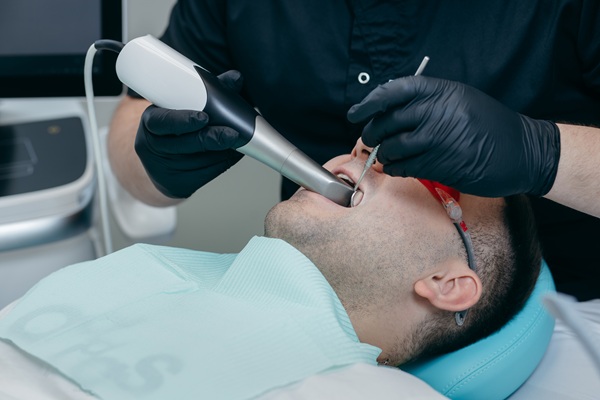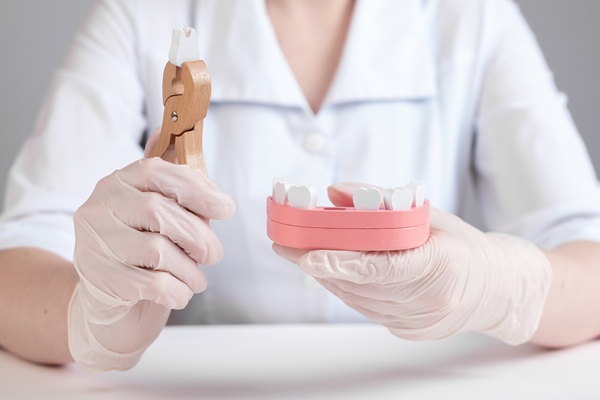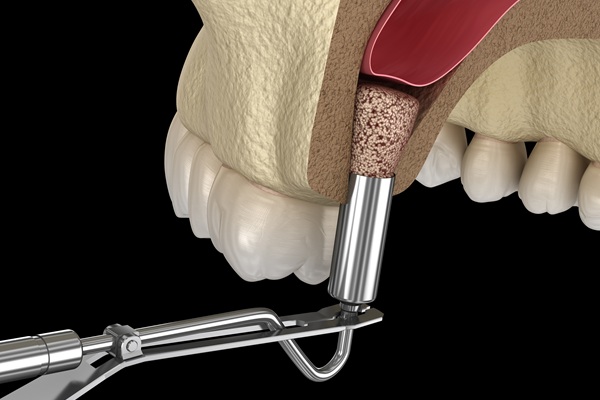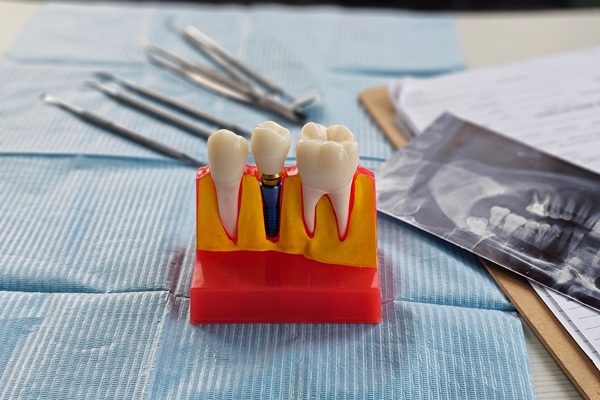Periodontal TreatmentBoca Raton, FL
Periodontal treatments involve various procedures that intend to treat or prevent the progression of periodontal disease. A periodontist is a qualified specialist in the field of periodontics and is most fit to perform periodontal treatments. Periodontal treatment can greatly aid in reducing or eliminating disease or infection in deep pockets while also protecting the surrounding teeth and tooth structures from further damage.
At Thomas A. Copulos DDS, PA we offer periodontal treatments for patients with or at risk of developing periodontal disease. Our team can help stop the disease or infection from spreading further and causing any oral health complications. We may also perform treatments to counteract any damage that has already been done. To learn more about a procedure or schedule an appointment, call 561-763-1066 today.
What are Periodontal Treatments?
Periodontal treatment encompasses any type of service or procedure involving the periodontium. The periodontium refers to the bone, connective tissue, and gum surrounding and supporting a tooth. This includes the gingiva, periodontal ligament, cementum, and alveolar bone. Periodontal treatments are typically performed on patients with developing gum disease or those at risk of acquiring the periodontal disease.
Periodontal treatments are categorized under surgical procedures, non-surgical procedures, dental implant procedures, and cosmetic procedures. Each treatment or procedure will have its own set of pre- and post-procedure guidelines, risks, complications, and recovery instructions. We will discuss the treatment in length with the patient prior to their procedure date.
Surgical Periodontal Procedures
We perform surgical procedures for patients with progressing periodontal disease that has spread deep in the gum pockets. Surgical periodontal procedures include:
- Gum Graft Surgery: Intended to treat exposed tooth roots, gum recession, and bone loss. The procedure involves placing excess or donor tissue in the site with the exposed root(s), followed by sealing and polishing the gums to create a more natural-looking smile.
- Regenerative Procedures: Performed when the underlying bone supporting the teeth and gums becomes damaged or destroyed. These procedures involve cutting and folding back part of the gums, removing the infection, administering bone grafts or tissue-stimulating proteins to assist in bone and tissue regeneration, and sealing the gums back in place.
- Dental Crown Lengthening: Used for patients with a “gummy smile.” In this procedure, a periodontist can reshape the gum tissue to help improve the appearance and function of a tooth or make other procedures possible.
- Periodontal Pocket Procedures: Intended to treat periodontal disease. Disease-causing bacteria fill spaces in the gums and create large pockets, causing gum recession and bone and tooth loss. During a pocket procedure, the gums are cut and folded back, bacteria is completely removed, damaged bone is smoothed out, and the gum tissue is reattached to the bone.
Non-Surgical Periodontal Procedures
Non-surgical periodontal procedures are treatments that do not require an incision. These procedures are typically performed on patients with minor issues or mild to moderate gum or periodontal disease. Non-surgical periodontal treatments include:
- Scaling and Root Planing: In this procedure, a periodontist deep cleans the infected surface of a tooth root and removes plaque from the surfaces and inner structures of the teeth. They then smooth the tooth root to prevent future plaque or toxins from developing.
- Laser Treatment: A laser device emanates powerful light energy to safely remove bacteria around the gumline. Lasers have different wavelengths and power levels to allow the removal of thick calculus in hard-to-reach areas.
- Tray Delivery Systems: Patient receives custom-made trays made of impressions of their teeth. They will be given a certain medicated fluoride solution to be used every day to reduce the disease-causing bacteria in the gums.
Dental Implant Procedures
Dental implant procedures are performed for patients with a missing, severely decayed, or damaged tooth. A dental implant is an artificial tooth root that takes the place of the damaged root and holds a tooth in place. In most cases, a dental implant procedure also involves an artificial tooth replacement, such as a crown, bridge, or denture.
There are a variety of dental implant procedures, including:
- Single Tooth Dental Implants: A dental implant that supports one single tooth.
- Multiple Tooth Dental Implants: Dental implants for multiple missing or damaged teeth and supported by a dental bridge.
- Full Mouth Dental Implants: Dental implants intended for the entire mouth, similar to dentures.
- Sinus Augmentation: Some areas, such as the upper back jaw, may be difficult for dental implantation as there may be insufficient bone quantity and quality and because of close proximity to the sinus. Sinus augmentation can resolve this problem; the procedure involves raising the sinus floor and developing bone for the placement of dental implants.
- Ridge Modification: For cases in which there is an inadequate amount of bone for dental implantation, the gums are pulled back to reveal the missing bone area. Excess or donor bone is placed into these empty areas, and the implant is then placed.
Cosmetic Procedures
Although periodontal treatments focus primarily on treating and eliminating the disease, many treatments also enhance the physical appearance of a smile. Patients may also choose to undergo a cosmetic procedure through a periodontist as they are specially trained in treatments of the gums.
Common cosmetic procedures include:
- Gummy Smile or Uneven Gum Line: Removal of excess gum tissue followed by sculpting and polishing the gumline.
- Long Teeth or Exposed Roots: Root coverage procedures that cover exposed roots or elongated teeth using excess gum tissue. These procedures can also help reduce further gum recession, protect the roots from decay, and improve the appearance of the patient’s smile.
- Indentations in the Gums and Jawbone: Correcting indentations made by a receding jawbone. The gums and jawbone are then sculpted and polished for a more natural-looking smile.
Frequently Asked Questions About Periodontal Treatment
How common is periodontal disease?
Periodontal disease is very common. The U.S. Centers for Disease Control and Prevention (CDC) estimates that 47.2% of adults older than 30 have periodontal disease. This estimate includes the mildest form, which is gingivitis.
What will happen if I do not get treated for periodontal disease?
Periodontal disease is a severe gum disease. Going without treatment often results in tooth and bone loss as well as other oral and systemic health conditions, including heart disease, stroke, diabetes, Alzheimer’s, some cancers, and pregnancy complications. Gum disease is best treated when diagnosed in its early stages.
What are the signs of periodontal disease?
Periodontal disease occurs from inflammation of the gums. This inflammation can cause bad breath, swollen or red-colored gums, gums that are tender or bleed, and pain with chewing. Periodontal disease can also affect the teeth, causing them to become loose, be sensitive, or fit together differently when you bite down.
What is the order of severity in periodontal disease?
Periodontal disease does not commonly occur suddenly or on its own. Generally, the disease starts off as gingivitis, then gum disease, then mild to moderate to severe periodontal disease. When gum disease goes untreated, the disease worsens and may be irreversible. It is important to get treated as soon as early symptoms start and continue seeking dental care.
What are the most common treatments for periodontal disease?
Nonsurgical treatments for periodontal disease include a scaling and root planing procedure and antibiotic medications or prescription mouthwash. Surgical treatments include flap surgery (or pocket reduction surgery), soft tissue grafts, bone grafts, guided tissue regeneration, and tissue-stimulating proteins.
Schedule a Visit Today
Periodontal treatments and consultations are available at our office. The Thomas A. Copulos DDS, PA team looks forward to treating you and helping reverse the effects of periodontal disease. Call our office at (561) 763-1066 to learn more or schedule an appointment.
Thomas A. Copulos DDS, PA is located at
1000 NW 9th Ct Ste 106
Boca Raton,
FL
33486





